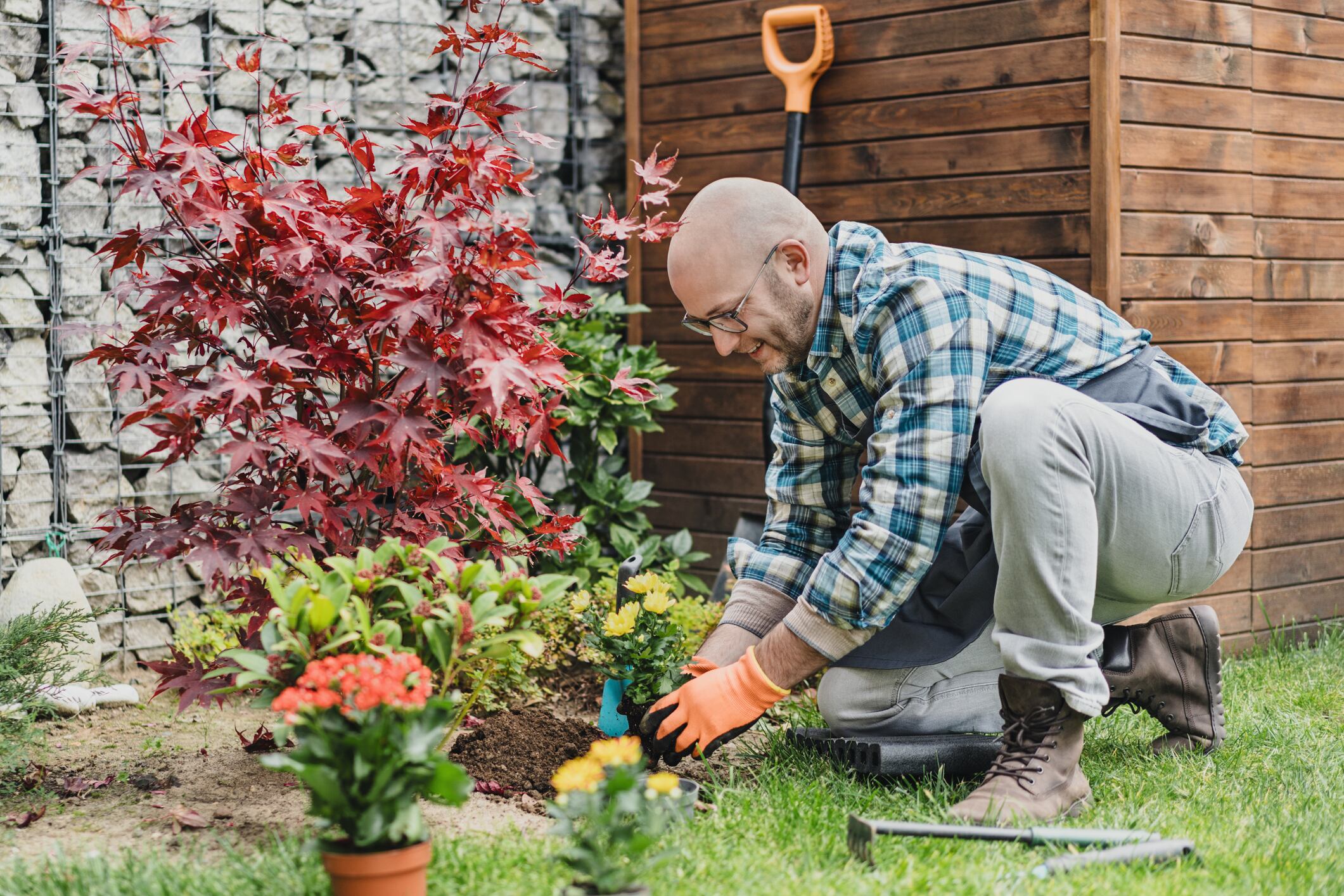As gardeners, it’s fair to say that we walk in the muddy footprints of those who’ve gone before us. Informed and inspired by their legacy, we gradually discover how to do things better, even when their sage advice might initially seem to fly in the face of current conventions.
For the British organic market gardener, author and YouTuber Charles Dowding, whose name is indelibly associated with the ‘no dig’ movement, it was a series of articles published by the Soil Association that first helped to pique his lifelong passionate interest in soil health. “It’s that idea of health as a positive state that goes far beyond the absence of disease. The more I read, the more it became clear that this was the key to happy, healthy, productive plants,” he says.
Further reading led him to the writings of an earlier generation of inspirational organic gardeners and farmers equally fascinated by the symbiotic relationship between soil health and plant health, many of them from the postwar eras of the first half of the 20th century. “People like Albert Howard, Eve Balfour, Edward Faulkner, Esther Deans, Shewell-Cooper, Arthur Guest, FC King, Ruth Stout and Maye Bruce, all significant figures in the organic movement.”
Forty-five years spent as an organic market gardener have subsequently honed his knowledge and expertise, consolidating Dowding’s firm belief that home-made compost is the magic ingredient on which the success of the no-dig approach, where soil levels are left undisturbed as a way of nurturing plant health and productivity, depends.
READ MORE
On his own organically managed market garden, Homeacres in Somerset, the neat grids of ultra-productive vegetable beds are typically mulched annually in autumn using compost produced on site with a seven-bay system. “A one-inch thick layer for established beds, more for new beds that can be planted up the very same day they are made for which I first use a layer of cardboard on the ground to help suppress weed-growth, covered with a four- to six-inch thick layer of home-made compost.”
That all-important compost-making method, where a wide range of organic materials is transformed into a hummus-rich, soil-life boosting material through a natural process of decomposition that’s a result of the action of a wide variety of beneficial organisms, most of them invisible to the human eye, is also the subject of his new book Compost (Dorling Kindersley).
“So many people are intimidated or confused by the abundance of well-meaning but conflicting advice available,” he says. “I’m always getting questions about it. ‘Is it okay to put weeds on the heap?’ ‘How do I make a hot heap?’ ‘What ratio of greens to browns?’ ‘How long does it take?’ ‘How thick should the mulch be?’ ‘Should I cover mulched beds with plastic in winter to prevent leaching?’ ‘Should the sides be slatted?’ I really wanted to demystify the process for gardeners by explaining the science behind it all.”

Dowding’s new book does exactly this, clearly, accessibly, persuasively and in his own inimitable style. Handsomely illustrated with plenty of informative charts and graphs as well as a very charming series of woodcuts by the British artist Jonathan Gibbs, it guides readers through the process with reassurances along the way that the end product doesn’t have to be a thing of crumbly perfection but just good enough to do the job for which it’s intended. “No problem if it’s a little lumpy. The only time you need fine crumbs is for propagation.”
Many years of research and careful record-keeping of results have shown me that using home-made compost mulches as part of the no-dig approach dramatically boosts plant yields and plant health
— Charles Dowding
It’s a firm yes to adding weeds to the heap, as well as adding most kinds of diseased plant material. “The only thing I wouldn’t add are potatoes hit by blight as there’s a chance that the disease could overwinter.” It’s also a firm yes to adding hedge trimmings, citrus peel, eggshells, small amounts of decomposed woodchip and fallen autumn leaves.
No, the heap doesn’t have to be brought to a sustained temperature of around 50-55 degrees, although this does help to effectively kill off weed seeds and pathogens and greatly speeds up the process. What’s more important is that the light doesn’t reach any weed material added.
How long for usable compost? As a rule, he says that a well-managed aerobic heap filled over the course of three months should produce compost suitable for use within six to nine months, 12 months or longer if you want it to be really crumbly.
Despite the popular belief that the sides should be slatted, he recommends solid walls to help retain heat. As for the perfect ratio of nitrogen-rich green material to carbon-rich brown material, Dowding recommends 3:1 but doesn’t rigidly follow this guideline. “Am I advising readers to spend hours painstakingly sorting through materials in order to achieve the perfect ratio? No, life’s too short for that,” he says with a cheery smile.
Answering some gardeners’ concerns about the possible risk to soil health from freshly mulched beds left exposed over winter, he explains that the special properties of home-made garden compost mean that it’s completely protective in this regard, requiring no additional cover in the shape of cardboard or plastic sheeting.

Another boon is a dramatic reduction in weeds so long as you keep on top of them by regularly hand-weeding or hoeing away any baby seedlings whenever they emerge. The same goes for slugs, says Dowding, as well as the need for watering during periods of drought.
Dowding offers concise instructions, too, on how to construct home-made compost bays, including advice on the ideal dimensions along with practical tips on insulating them and keeping them dry. For small gardens, he gives a thorough overview of other options available from the affordable Dalek-style conical bins to more expensive designs such as the Hotbin. Wormeries and Bokashi-style methods that rely on fermentation rather than traditional decomposition are also covered.
But what about the often-voiced criticism of the no-dig method that most typical households will never generate enough home-made compost for their needs? Dowding says that he’s always happily ‘on the scrounge’ for suitable compost material, from other gardeners’ discarded weed piles and cut-grass piles to the clippings and woodchips that are a natural byproduct of tree-surgeons’ businesses. As for those gardeners who supplement by buying in materials such as manure to add to their heaps, he argues that it’s still a great investment as well as a relatively economical one.
“Many years of research and careful record-keeping of results have shown me that using home-made compost mulches as part of the no-dig approach dramatically boosts plant yields and plant health, removing the need for expensive interventions such as synthetic fertiliser and chemical forms of pest and disease control used in conventional gardening. And of course it’s great for the planet.”
A committed organic gardener all his life, does he believe that the tide is slowly but surely turning? “You know, I’d love to think so but there’s still a surprising amount of resistance out there. Time will tell.”
This week in the garden
Sow and plant winter and early spring polytunnel crops such as oriental salad leaves, hardy lettuce and land cress.
Sow broad beans and plant suitable varieties of overwintering garlic outdoors in the kitchen garden or allotment.
Dates for your diary
Saturday, October 26th and Sunday, October 27th: The Organic Centre, Rossinver, County Leitrim – the organic gardener and no-dig expert Charles Dowding will be giving a series of two one-day workshops. Pre-booking essential. See theorganiccentre.ie or call 0719854338.

















